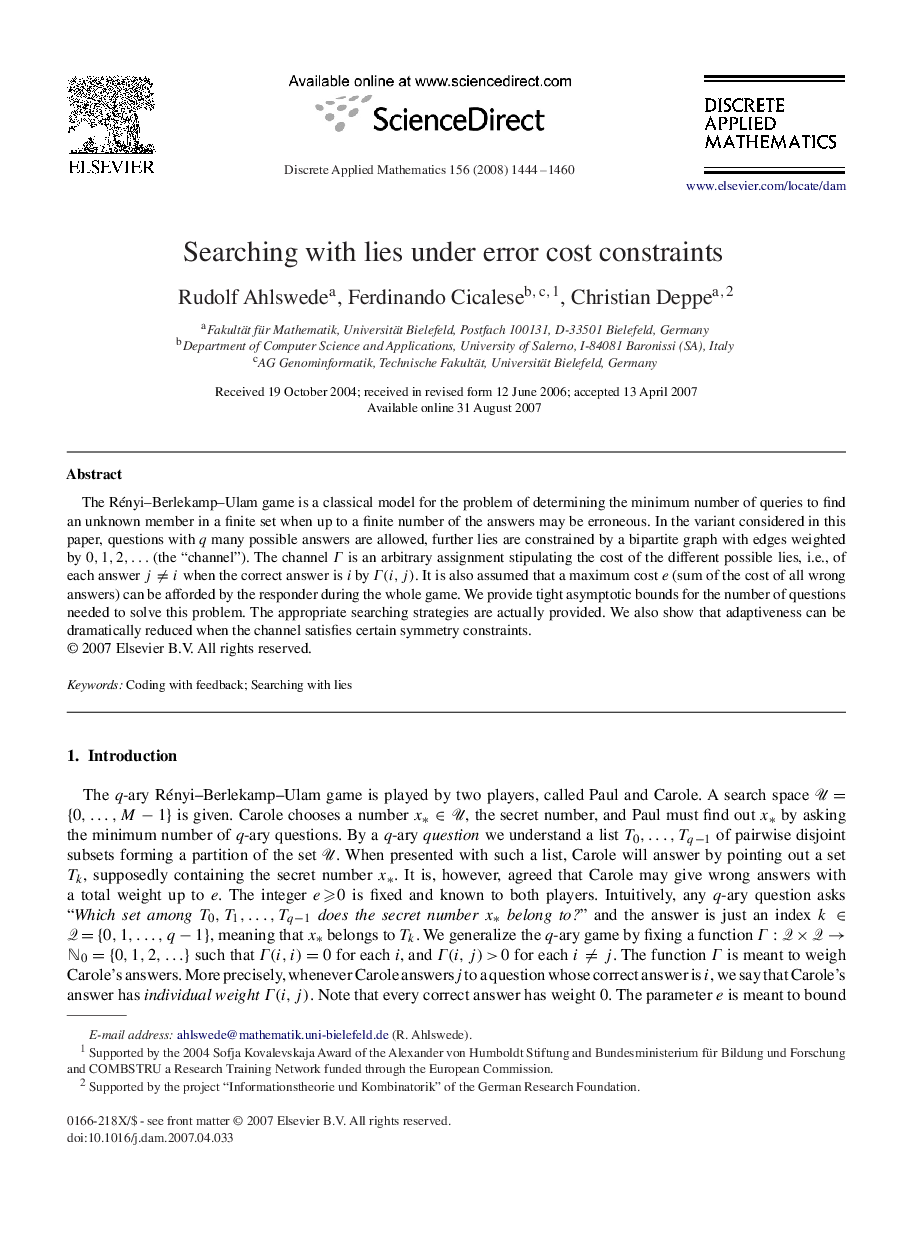| Article ID | Journal | Published Year | Pages | File Type |
|---|---|---|---|---|
| 419877 | Discrete Applied Mathematics | 2008 | 17 Pages |
The Rényi–Berlekamp–Ulam game is a classical model for the problem of determining the minimum number of queries to find an unknown member in a finite set when up to a finite number of the answers may be erroneous. In the variant considered in this paper, questions with q many possible answers are allowed, further lies are constrained by a bipartite graph with edges weighted by 0,1,2,…0,1,2,… (the “channel”). The channel ΓΓ is an arbitrary assignment stipulating the cost of the different possible lies, i.e., of each answer j≠ij≠i when the correct answer is i by Γ(i,j)Γ(i,j). It is also assumed that a maximum cost e (sum of the cost of all wrong answers) can be afforded by the responder during the whole game. We provide tight asymptotic bounds for the number of questions needed to solve this problem. The appropriate searching strategies are actually provided. We also show that adaptiveness can be dramatically reduced when the channel satisfies certain symmetry constraints.
